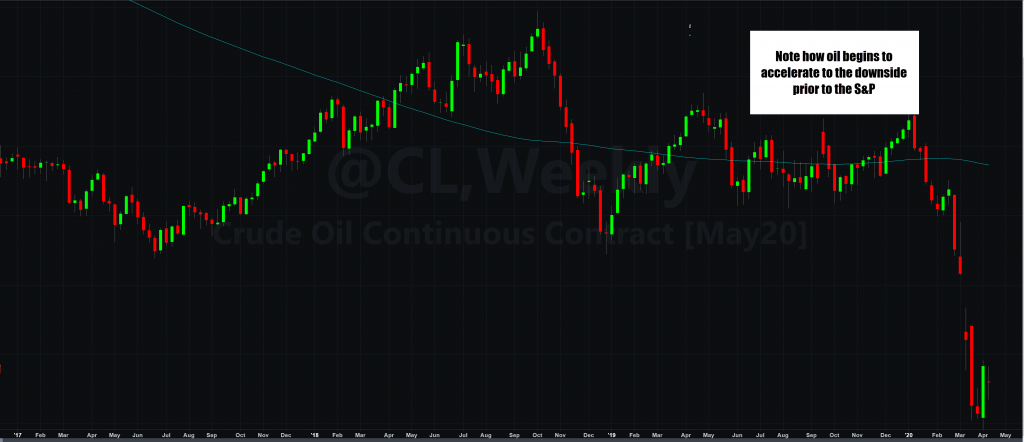There is a famous quote on wall street that “The trend is your friend”. Regardless of the timeframe, technical traders can gain an edge by sizing up long term charts. The end of the global financial crisis led to the beginning of one of the longest bull markets of all time. On November 5, 2010, the S&P 500 index ($SPX.X) was able to regain the weekly 200 simple moving average (SMA) and never looked back.
S&P 500 has held the weekly 200 SMA since the end of the financial crisis
The weekly 200 SMA is used by technicians to size up the macro trend. Since the initial break out above the moving average, the S&P 500 has tested the level four times: August of 2011, February of 2016, December of 2018, and March of 2020.
Below are the reasons for the corrections and the corresponding outcomes: *ABC correction is mentioned twice. Learn about ABC corrections
2011: Recovery from the financial crisis. The first touch of the 200 SMA as S&P 500 retests the breakout.
2016: Volatility due to Brexit vote and Chinese Stock market turbulence. ABC correction gets support very close to 200 SMA
2018: Escalating trade dispute between China/United States. ABC Correction to 200 SMA.
2020: Corona Virus Pandemic. Flush below the moving average and regain (as of now)
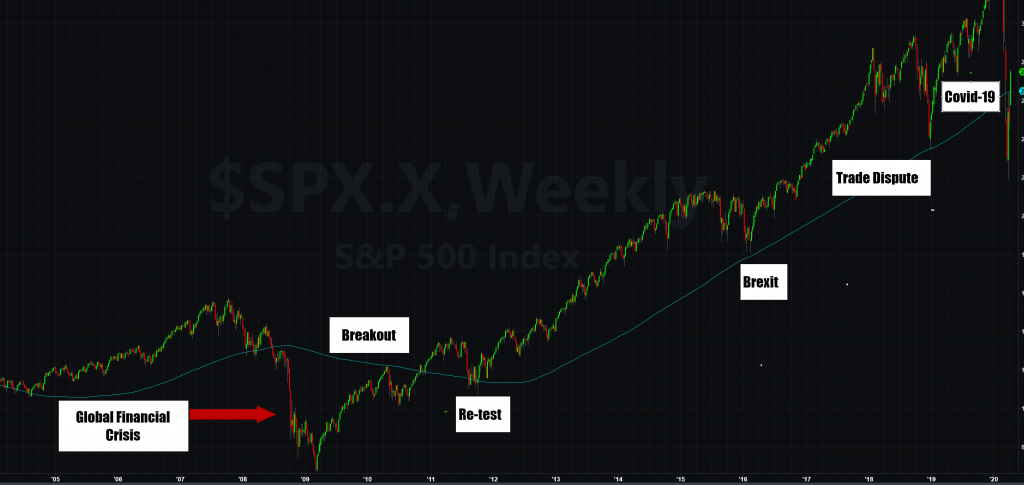
Weekly 200 SMA shown on chart
Technicians tend to put more credence in a moving average the more times it is touched and the more time elapses between each touch. Since the entire trend following the financial crisis has been contained by the 200 SMA, it has been visited four times, and the touches have been so far apart, it is worth watching.
VIX, TLT have extreme moves
The S&P 500 Volatility Index ($VIX.X), a measure used by traders to determine fear and extremes just recorded the highest closing price in years- exceeding the highs from 2008. History suggests, VIX typically cannot maintain this level of volatility going forward. While volatility has hit a very extreme level, it does not mean it will die down overall. Though VIX has crashed from the highs, the VIX is still elevated when looking back over the last few years. Traders need to be aware of this.
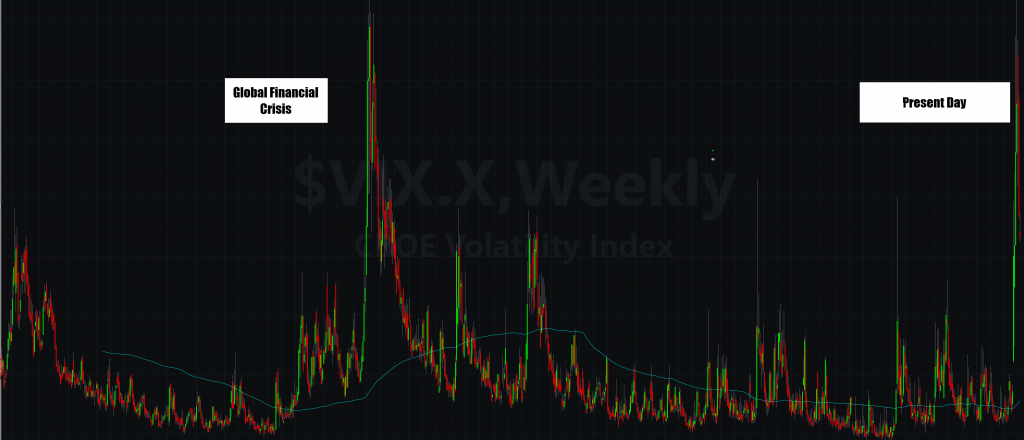
VIX at extremes not seen since 2008
Another instrument that showed an extreme recently is the (TLT), an ETF seeking performance corresponding to the 20-year Treasury Bond. The ETF saw the highest volume ever recorded in its history on March 9 as the price action went nearly vertical. Investors will be anxious to see whether the move was part of a blow-off top. A blow-off top occurs when price and volume hit extremes. They are important because they often lead to the end of a significant move.
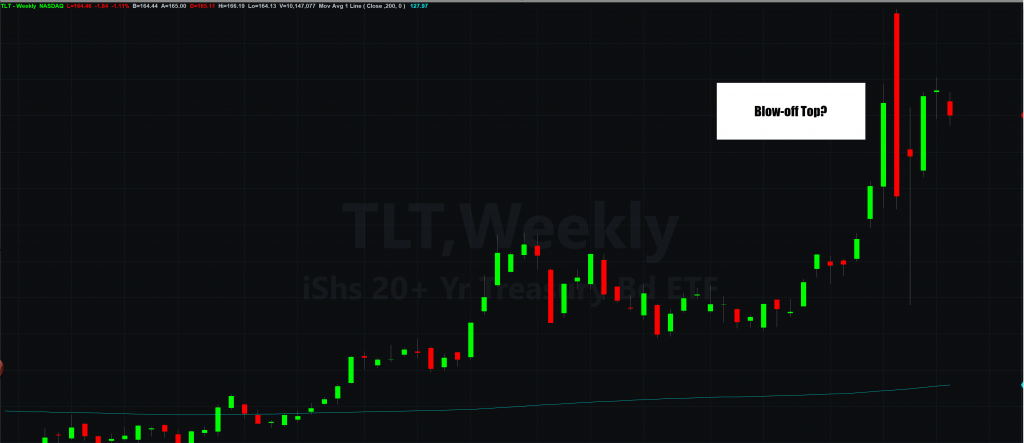
TLT sees uncharastic spike in price and volume.
As oil goes, so goes the market
Hints of the recent correction coming could have been seen in the price of crude oil (@CL). Though oil has been weak for several years, the 2020 sell-off has taken it to another level. Crude has been a leading indicator recently and began to break down further in January, two months before the overall market. While the Corona Virus pandemic has weighed down the market, the decline of the energy sector has as well. Energy makes up a large part of the U.S. economy. The oil market will likely take direction from the OPEC meeting today at 10 EST. Any signs of stabilization in the oil market could be a good sign for equities going forward.
Beaten Down Stocks Stabilize
The market fall was not only led by energy. Travel and leisure stocks have been drastically affected as well. If stocks like Hilton Worldwide (HLT), Boeing (BA), and Wynn Resorts (WYNN) (which are each up 15% or more in the last week) can continue to stabilize, it will be another sign that the market may have found its footing.
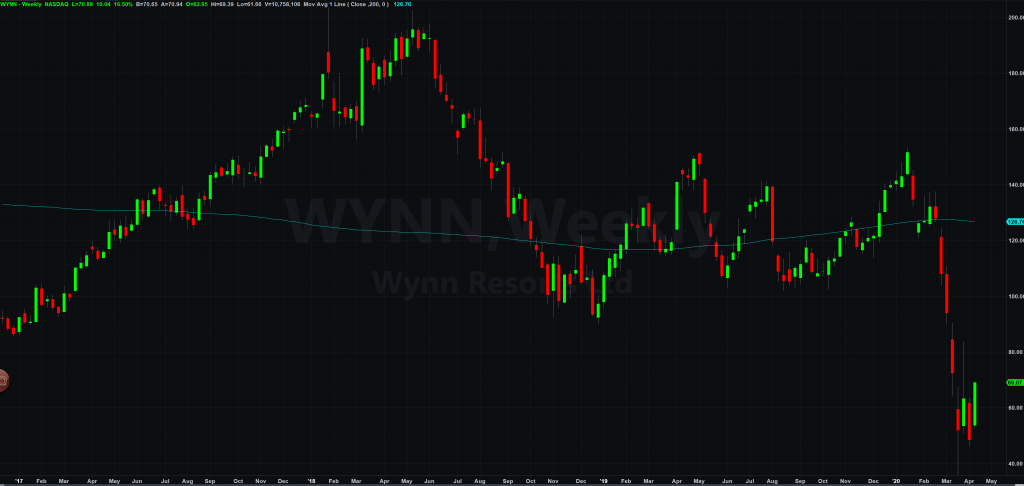
Beaten down casino operator WYNN is up 42% on the week
In conclusion, there is not one be all end all answer to what is to come moving forward. However, investors can use some of the indicators mentioned to help piece the puzzle together.











